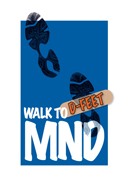Upper and Lower classification of Motor Neuron Diseases
Diseases of both the upper and lower motor neurons
Amyotrophic lateral sclerosis (ALS), also called Lou Gehrig's disease or classical motor neuron disease, is a progressive, ultimately fatal disorder that eventually disrupts signals to all voluntary muscles. In the United States, doctors use the terms motor neuron disease and ALS interchangeably.
Both upper and lower motor neurons are affected.
Approximately 75 percent of patients with classic ALS will also develop weakness and wasting of the bulbar muscles (muscles that control speech, swallowing, and chewing).
Symptoms are usually noticed first in the arms and hands, legs, or swallowing muscles. Muscle weakness and atrophy occur disproportionately on both sides of the body. Patients lose strength and the ability to move their arms, legs, and body. Other symptoms include spasticity, exaggerated reflexes, muscle cramps, fasciculations, and increased problems with swallowing and forming words. Speech can become slurred or nasal. When muscles of the diaphragm and chest wall fail to function properly, patients lose the ability to breathe without mechanical support. Although the disease does not usually impair a person's mind or personality, several recent studies suggest that some ALS patients may have alterations in cognitive functions such as problems with decision-making and memory.
ALS most commonly strikes people between 40 and 60 years of age, but younger and older people also can develop the disease. Men are affected more often than women.
Most cases of ALS occur sporadically, and family members of those individuals are not considered to be at increased risk for developing the disease. (There is a familial form of ALS in adults, which often results from mutation of the superoxide dismutase gene, or SOD1, located on chromosome 21.)
A rare juvenile-onset form of ALS is genetic. Most ALS patients die from respiratory failure, usually within 3 to 5 years from the onset of symptoms. However, about 10 percent of ALS patients survive for 10 or more years.
Miscellaneous
Post-polio syndrome (PPS) is a condition that can strike polio survivors decades after their recovery from poliomyelitis.
PPS is believed to occur when injury, illness (such as degenerative joint disease), weight gain, or the aging process damages or kills spinal cord motor neurons that remained functional after the initial polio attack.
Many scientists believe PPS is latent weakness among muscles previously affected by poliomyelitis and not a new MND.
Symptoms include fatigue, slowly progressive muscle weakness, muscle atrophy, fasciculations, cold intolerance, and muscle and joint pain.
These symptoms appear most often among muscle groups affected by the initial disease. Other symptoms include skeletal deformities such as scoliosis and difficulty breathing, swallowing, or sleeping.
Symptoms are more frequent among older people and those individuals most severely affected by the earlier disease.
Some patients experience only minor symptoms, while others develop SMA and, rarely, what appears to be, but is not, a form of ALS. PPS is not usually life threatening. Doctors estimate the incidence of PPS at about 25 to 50 percent of survivors of paralytic poliomyelitis.
There are 3 classifications of ALS:
- Sporadic - the most common form.
- Familial - genetic inheritance
- Guamanian - high incidence of ALS in Guam in the 1950's.

